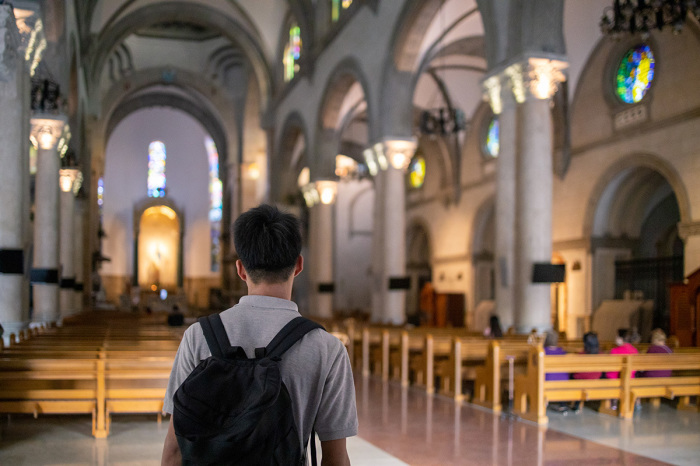Pandemic accelerated fall in church attendance, especially among the young: study

While religious identity among Americans remained largely stable throughout the COVID-19 pandemic, it accelerated existing trends in declining church attendance, particularly among the young, a new report from the Survey Center on American Life shows.
In "Faith After the Pandemic: How COVID-19 Changed American Religion," researchers Jennifer Benz, Lindsey Witt-Swanson and Daniel A. Cox measured religious affiliation and attendance before the pandemic lockdowns — 2018 to March 2020 — and again in the spring of 2022 and found that even though Americans largely maintained their religious identity, at least at the cultural level, many who stopped attending church during the pandemic did not return.
“Religious attendance was significantly lower in spring 2022 than it was pre-pandemic. In spring 2022, 33% of Americans reported that they never attend religious services, compared to one in four (25%) who reported this before the pandemic,” the researchers wrote.
Among the most religious Americans, the drop in church attendance was less drastic. The percentage fall in church attendance among Americans who reported attending religious service at least once a week had only fallen from 26% before the pandemic to 24% in spring 2022.
According to the report, more Americans disclosed that they never attend religious services or attend less frequently than they did in the years before the pandemic, but most of this falling away came from the population of Americans that had weaker ties to religious institutions.
“Nearly all Americans who have shifted to no longer attending religious services at all were those who infrequently attended before the pandemic. Few Americans who were regularly attending before the pandemic report that they no longer attend at all. And few of those who were occasionally attending services before the pandemic report that they do not attend anymore,” researchers said.
This trend, however, was starkest among young adults.
“No group of Americans has undergone more significant change in religious attendance than young adults. More than four in 10 young adults report different levels of religious participation today than they did before the pandemic,” researchers explained.
“Only 58% of young adults report the same level of religious attendance in spring 2022 as they did a couple years earlier. Nearly one in three (30%) of young adults are attending religious services less often today, while 12% are more active,” they continued. “In contrast, three-quarters of seniors are attending just as often today as they were before the pandemic.”
Researchers noted that “rather than completely upending established patterns, the pandemic accelerated ongoing trends in religious change.”
“Young people, those who are single, and self-identified liberals ceased attending religious services at all at much higher rates than other Americans did. Even before the pandemic, these groups were experiencing the most dramatic declines in religious membership, practice, and identity. At least in terms of religious attendance, the pandemic appears to have pushed out those who had maintained the weakest commitments to regular attendance,” the report added.
It further noted that “the decline of religious attendance and the stability of religious identity over the past two years suggest a decoupling of identity and experience.”
“Increasingly, religious affiliation may tell us less about the full range of religious and spiritual experiences Americans have and the extent of their theological commitments,” the researchers said.
In recent years, churches have increasingly grappled with how to attract younger people, but in "Generation Z and the future of faith in America," Cox explained that the younger generation has a diminished view of religion in part due to their parents doing less to encourage them to participate in formal worship.
“Young adults today have had entirely different religious and social experiences than previous generations did. The parents of millennials and Generation Z did less to encourage regular participation in formal worship services and model religious behaviors in their children than had previous generations,” Cox wrote. “Many childhood religious activities that were once common, such as saying grace, have become more of the exception than the norm.”
Others, like Chestly Lunday, an expert in innovative leadership who has helped churches and companies lead in the digital age, told The Christian Post in a recent interview that one of the biggest reasons behind the declining statistics in traditional church membership is that the younger generation and innovative Christians have migrated online while older adults refuse to adapt.
“What we're seeing [now] is the exodus of the late majority [from traditional churches],” Lunday said. “We're not seeing the exodus of early adopters [of technology], and the early majority of innovators. They've been gone already for a while. So what you're seeing now, like one major church, where pre-pandemic people were coming 1.4 times a month, now they're coming ... 0.8 times per month, meaning one of the best communicators in North America can't get somebody [in church] to tell [them about Jesus] once a month a year anymore. That's what that means.”
Contact: [email protected] Follow Leonardo Blair on Twitter: @leoblair Follow Leonardo Blair on Facebook: LeoBlairChristianPost




























